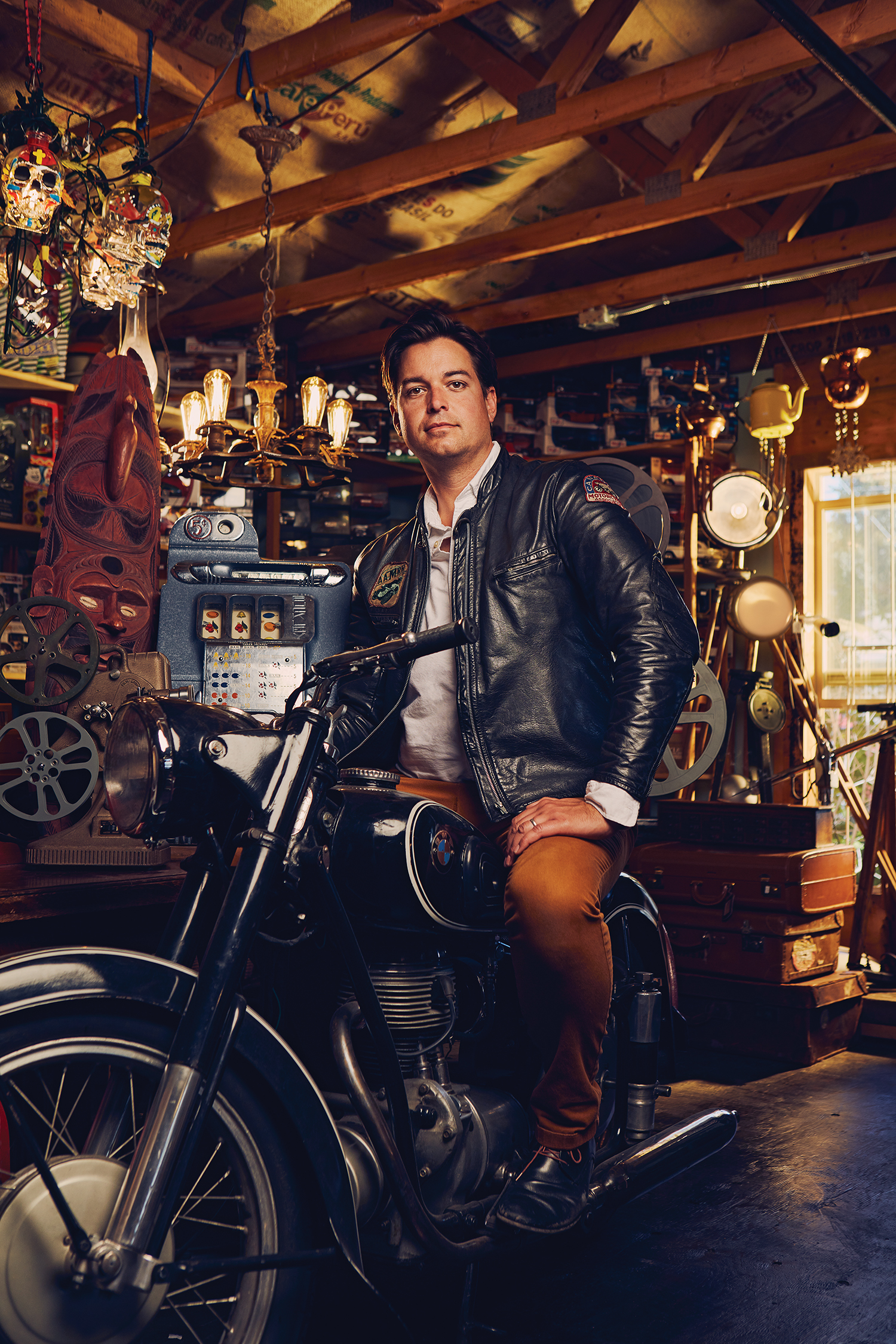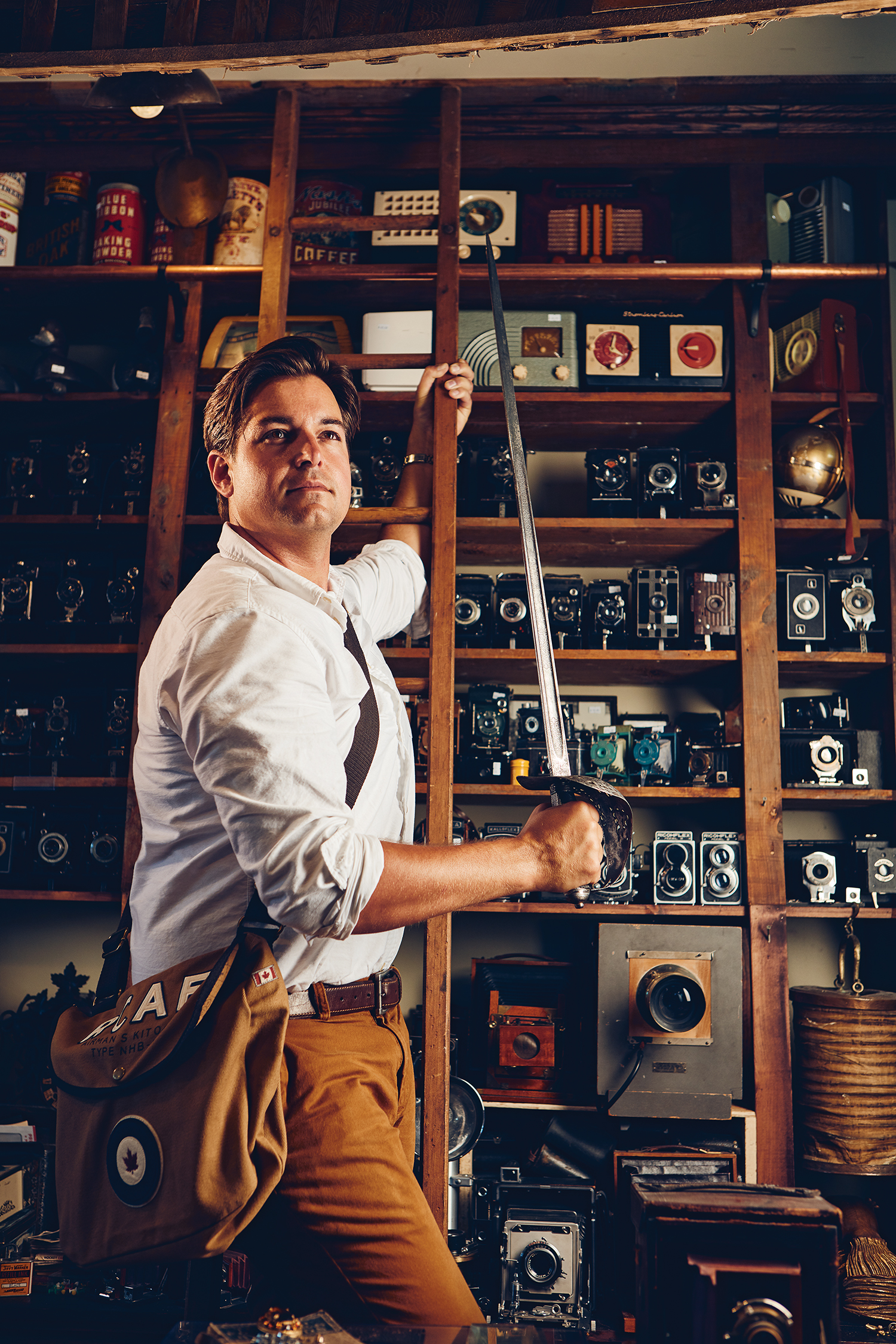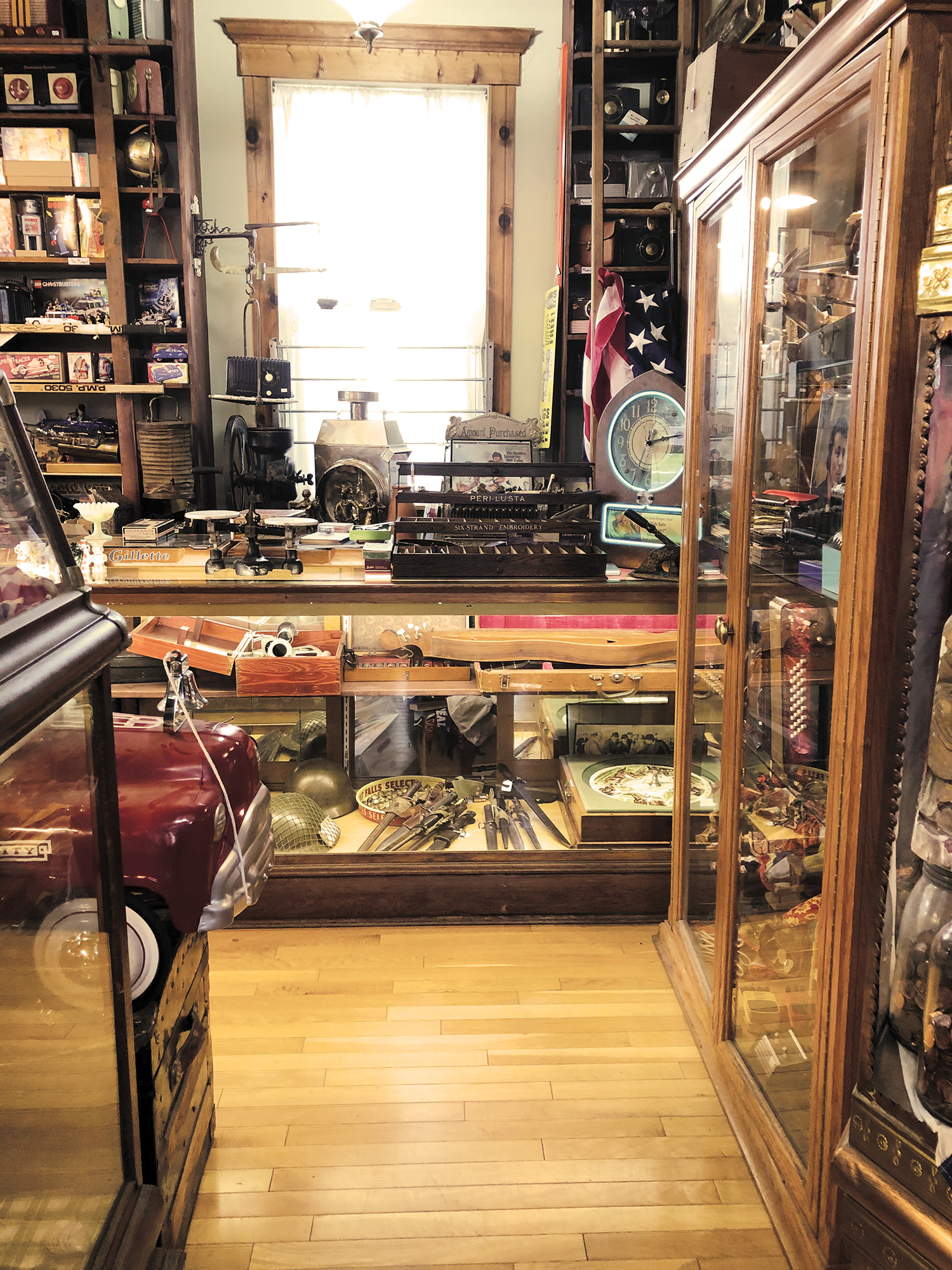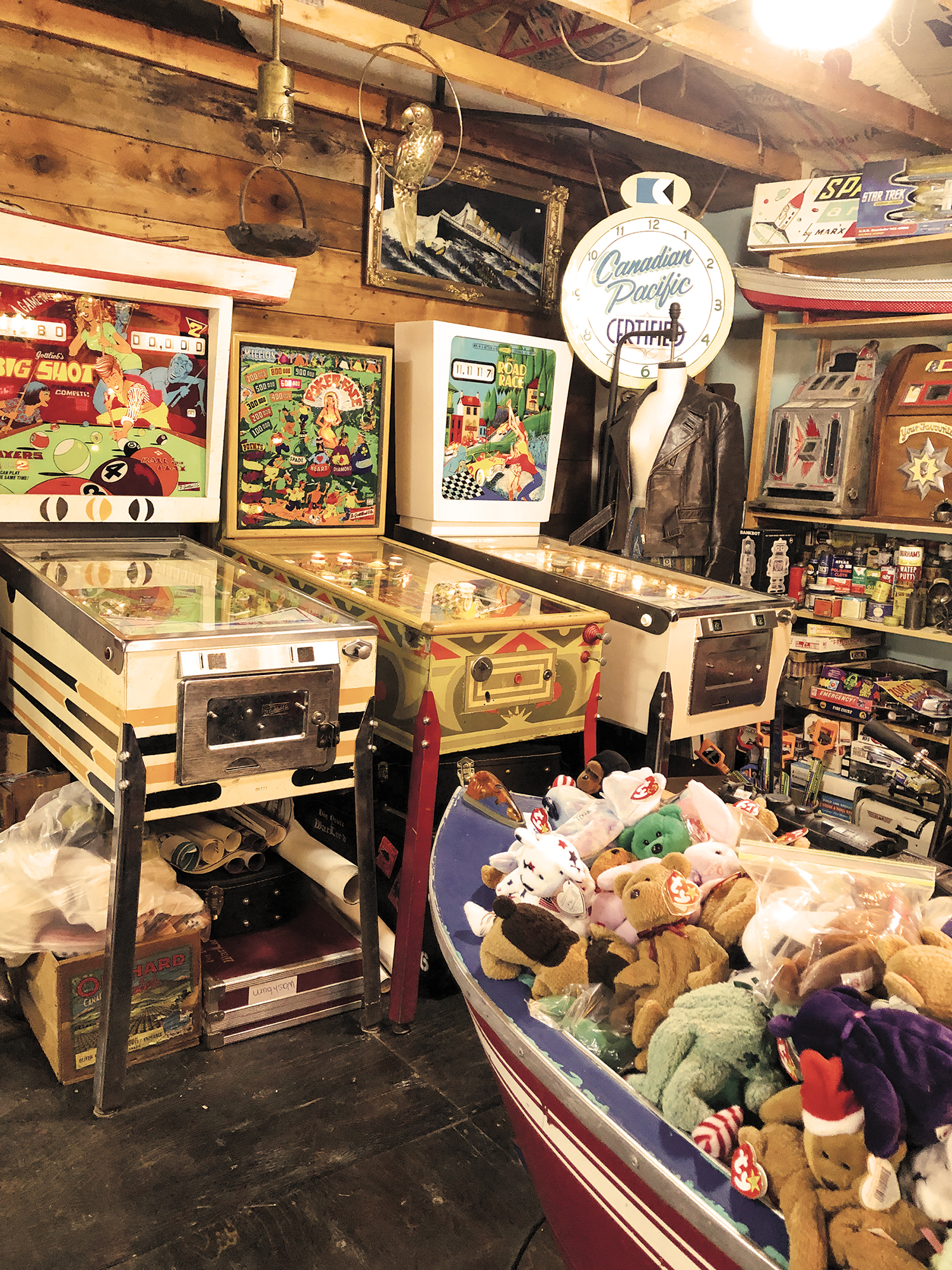
Alex Archbold watched several antiques he’d just cleaned out of his store sell through an online auction. A knife originally owned by American folk legend, Jim Bowie, garnered less interest than expected, while a Second World War gas mask raked in bid after surprising bid.
Archbold joked that it’s a sign of the times. “You wear that out in public, that ought to keep you safe,” he said of the mask to his more than 300,000 YouTube subscribers.
It’s an off-the-cuff comment, but it hit close to home. At the time of writing, schools were closed, sports leagues had postponed their seasons and nonessential businesses were temporarily shuttered because of the global spread of COVID-19. It’s a pandemic the likes of which haven’t been witnessed since several decades before that Second World War mask was put to use.
Archbold’s antique shop, Curiosity Inc., was among those that were closed during the quarantine. It reopened this June, with social distancing guidelines in effect. While he often used the online forum to supplement his income, now it’s taken the forefront under very different circumstances. Online interactions aren’t new to him, though. Shortly after he opened his shop over four years ago, he started creating YouTube content for an international audience.
He’d been working previously as a manager at an Apple store, and selling antiques on the side. But when he told his wife, Melissa, his dream to open an antique store after retirement, she said they shouldn’t wait. So they bought a historic, commercial building and stocked repurposed shelves with items from an abandoned Saskatchewan antique shop, among others.
“It was a risk. You buy the building and go out and buy the stock, and don’t know if you’ll have any customers,” says Archbold. “The first bit, it was scary. It was a big investment. Out of desperation, I started doing YouTube videos — it was just product walkthroughs.”
The YouTube channel took off as Archbold shared his everyday adventures, including a trip to Manitoba to purchase an old ambulance, to be used for rescuing antiques while generating interest in the store. The video garnered over 500,000 views. While that vehicle didn’t work out, he later purchased another ambulance that he decked out in Ghostbusters decals.

On this day, Archbold is working on an old Rolls Royce while his daughter — one of three of Archbold’s kids — sits in the passenger seat. Racoons had destroyed the interior and people scoffed when he bought it. After weeks of work, its original glory returned. “Now, it’s like: Oh, you have a Rolls Royce? Wow,” says Archbold.
Archbold lives by the idiom “one man’s trash is another man’s treasure.” But maybe it’s more accurate to say he sees potential that others might initially disregard. For a few hundred dollars, he once bought a suitcase full of silver coins that were worth thousands; he rescued a garbage bag full of expensive Rolex parts that was destined for the dump; and he discovered a wedding gift to Sir John Franklin forgotten in a dresser drawer.
Once a homeless man came into his shop with an actual animation cell from the Disney Bambi movie — he’d found it in the garbage. It was worth thousands of dollars. Archbold could relate to the man’s experience as he was homeless for a short time as a child — and he’d helped his parents by selling antiques. So, Archbold gave him half the earnings in cash, and used the other half to buy him clothes, food, a train ticket, a hotel room and even a driver’s licence. He then started a GoFundMe account that paid for the man to get back on his feet in his hometown, reconnect with his kids and start a career. They’re friends now who chat weekly.
Conducting business fairly is important to Archbold. “We didn’t really choose to do this business to make money. We tell people exactly what their item is worth and offer a price based on that,” says Archbold. “So, if they come in the store and see their item, they know we paid a fair price for it.”
He even shared the proceeds of one of his biggest purchases — an entire house — with those who sold it to him. The relatives of artist Mary Borgstrom were planning on bulldozing her house. She had been a successful artist, but they believed her work was in galleries or had been removed from the home. It was hard to tell exactly what remained; after years of hoarding, piles of seemingly worthless items occupied every square inch of space. So, they asked Archbold to look at the contents in case something valuable caught his eye. Archbold knew there were enough items he could sell in his store so he and his wife bought the whole home. But as he dug through the layers of possessions, akin to an archeological dig, he uncovered valuable artifacts far beyond what he’d expected — including a Mayan jug that was thousands of years old — along with original artwork from the homeowner. Archbold ended up writing a book and creating his very successful YouTube series about the experience, which gathered millions of views, while sharing 50 per cent of the proceeds from the art sales with the woman’s children. “I didn’t feel right taking all the money. That was their legacy.”

While that home may have been an extreme example of valuable items being easily overlooked, Archbold believes every house has at least one thing that’s really unique or noteworthy. “And my job is to find those things, if they want to part with them, and bring them back to life. It’s about saving things from the trash or being sold in the wrong way and having that history lost. And getting them into the hands of the next person who will take care of them.” says Archbold.
But, Archbold says, now many people are at home due to COVID-19 restrictions and they’re cleaning out their houses and the stuff has nowhere to go. “It makes me feel sad. I feel like it’s my responsibility to go out there and find all these things and get them to the best home possible. All we are, are caretakers for the next generation.” Archbold will continue salvaging items, but he also encourages people to look at their old items differently. If people do their research, they can determine value through maker’s marks and information found online. Some items — including cars, furniture and clothes — also have value from a practical perspective, as many times they were manufactured to last longer than their newer counterparts. Even an expensive new couch, he says, will not be made with comparable materials to one built in the ’50s or ’60s.
“Planned obsolesce. They didn’t think about that back then. They staked their company’s name on the build quality, the reputation. They wanted it to last forever,” says Archbold.
Restoring older items can sometimes even diminish their values. “There’s something about an item where somebody has rested their hand on a desk to write a letter for 100 years. This tells a story and when you sand that off, you’ve sanded away history,” he says.
There are cases, though, where the piece may be so far gone, it might be junk anyway. “And I think that if you’ve got that piece in your basement, and are thinking about throwing it out, maybe look at creative upcycling ideas. Or look at interesting renovations that people have done to get inspiration online, and then take that inspiration and do something with what you have around the house,” he says.

A few weeks after we spoke, COVID-19 went from being something Archbold just heard about on the news to something that directly impacted his family. His father-in-law contracted the disease and passed away. Archbold and his family are devastated by the loss.
“He was more than a father-in-law, he was a friend,” says Archbold. A compilation of video footage shows the two sharing many laughs and adventures. The next video offers a sharp contrast to many of the upbeat videos of the past as Melissa and Alex speak of the shock and loss they’re experiencing.
The kind words of friends, family and even strangers flash across their screen as they speak. People from around the world share stories of similar heartache. A collective sadness and grief reverberates across the large community the Archbolds have created over the past few years. It’s clearly hard for the couple to speak of the experience — Melissa has to stop a few times to collect herself — but they’re determined to share their story in hopes it will help others. It’s how they live their lives with the goal of being as open and helpful as possible regardless of the circumstances.
This article appears in the October 2020 issue of Edify







